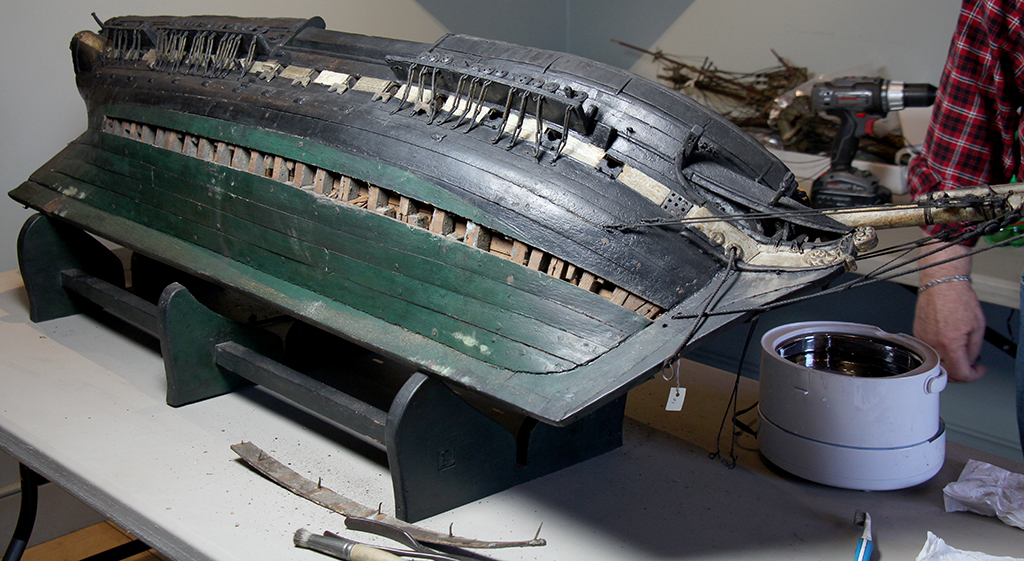USS Constitution‘s 2015 – 2017 dry docking and restoration is winding down and she will be refloated in Boston Harbor later in the summer. At the USS Constitution Museum, however, the third year of a projected multi-year restoration of the Museum’s 1870s Loring model of “Old Ironsides” has just concluded for this season. We have already written about the model in Part I and Part II of our series “Restoring an Icon in Miniature” and we invite you to look back at work already accomplished on the model.
The Loring model restoration takes place during the Museum’s annual ship model show, Masters of Miniature, which ran this year from November 11, 2016 to January 7, 2017. Earlier work included the removal of the complete rig, spit-cleaning of the decks which were later removed to expose the model’s interior, and vacuuming the interior which revealed small pieces of the model and its equipment that had long-ago broken away or fallen into the model’s bilge. Rob Napier, professional ship model builder and restorer, has taken on the task of re-building and restoring the Loring model. As he takes the model apart, Rob is carefully cataloguing each piece and photographing his finds as he goes along.
The work that Rob began on the model this past year coincidentally mirrored work that has been underway on the actual ship. While the scale of the two restorations is vastly different, the rebuilding and repairs of hull planking, channels, and rigging needs to take place on both ships, big and small.
The Loring model was displayed for many years at Boston’s Old South Meeting House in the early 20th century. On at least one occasion, the model fell off its display stand and crashed to the floor! This year Rob focused on the port main channel (photo below) which likely sustained damage when the model fell. Rob also carried out further cleaning of the model’s interior.

Channels are projecting platforms on either side of a vessel. They extend the spread of the shrouds (the ladder-like lower standing rigging) from the side of the hull, thereby lending greater support and security to the masts. The lines that make up the shrouds are looped around the top of each mast section and then led down to “dead eyes,” the round wooden block with three holes through which the lanyards are laced. The dead eyes are secured on the channels by the “chains” which both help to support the channels and, because the chains are bolted to the side of the vessel, provide the strength to support the shrouds, which support the masts. The section of the 1817 sail plan of USS Constitution, by Charles Ware (below), shows the starboard main and mizzen channels with their dead eyes, through which the shrouds are laced with the lanyards, and the supporting chains under the channels.
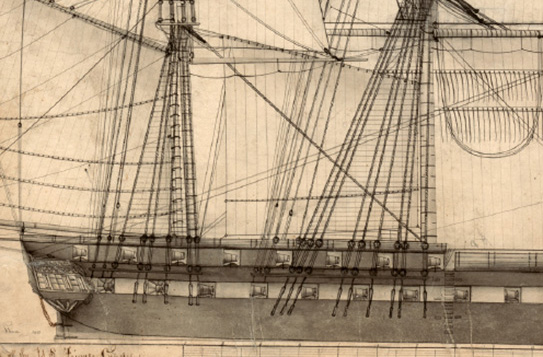

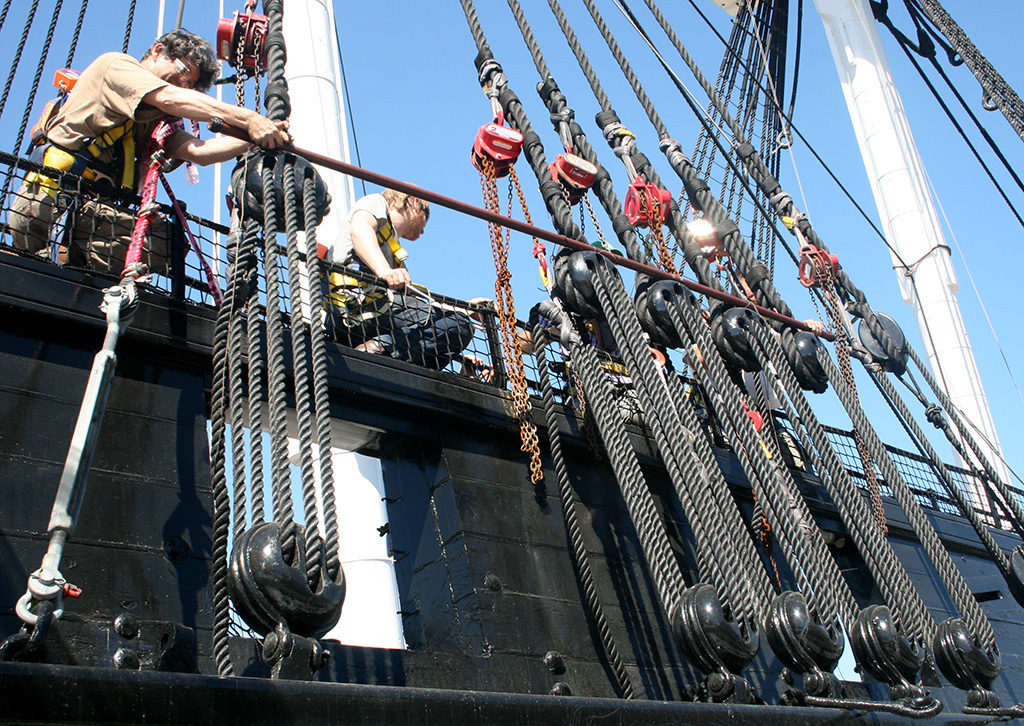

In order to remove the port main channel on the Loring model, Rob had to remove the individual dead eyes which were also connected to their chains (see below). Rob placed the dead eyes and chains in an Ultrasonic Cleaner which cleans the objects using ultrasound waves pulsing through a water bath.


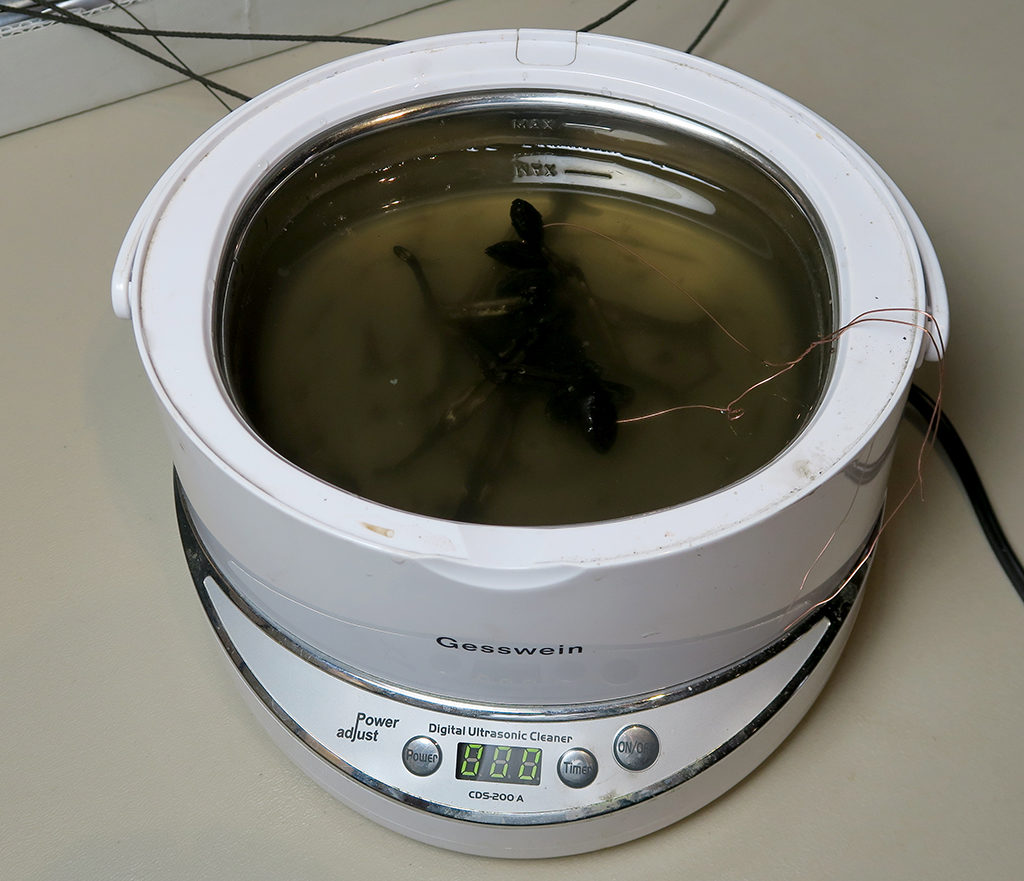



Late in 2016, the port fore channel on USS Constitution, which had rotted, was removed and a new one was installed. The platform of the channel is made from four large planks, the inner-most of which is bolted directly to the ship’s hull, thereby anchoring the other sections of the channel. Because Constitution‘s lower shrouds, deadeyes, and chains were not removed when the port fore channel was replaced, a temporary bracing system was installed to support the rigging while the rotten channel was removed and the new one was built in place.
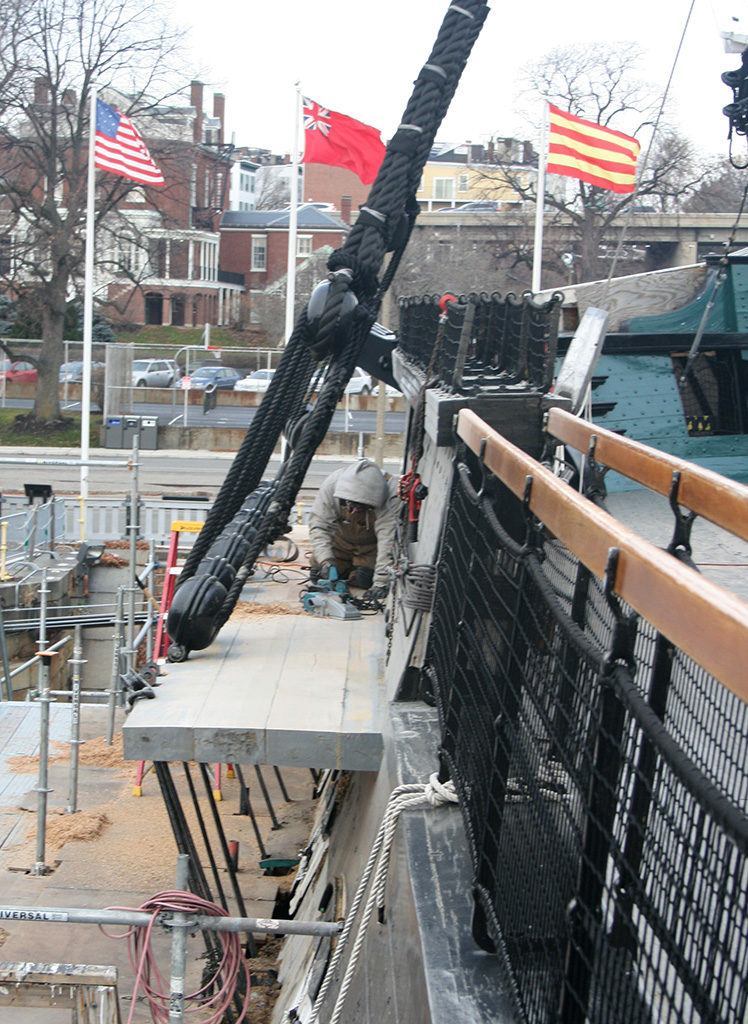

Rob continued cleaning the Loring model by removing two starboard lower hull planks which exposed framing that was filled with debris.
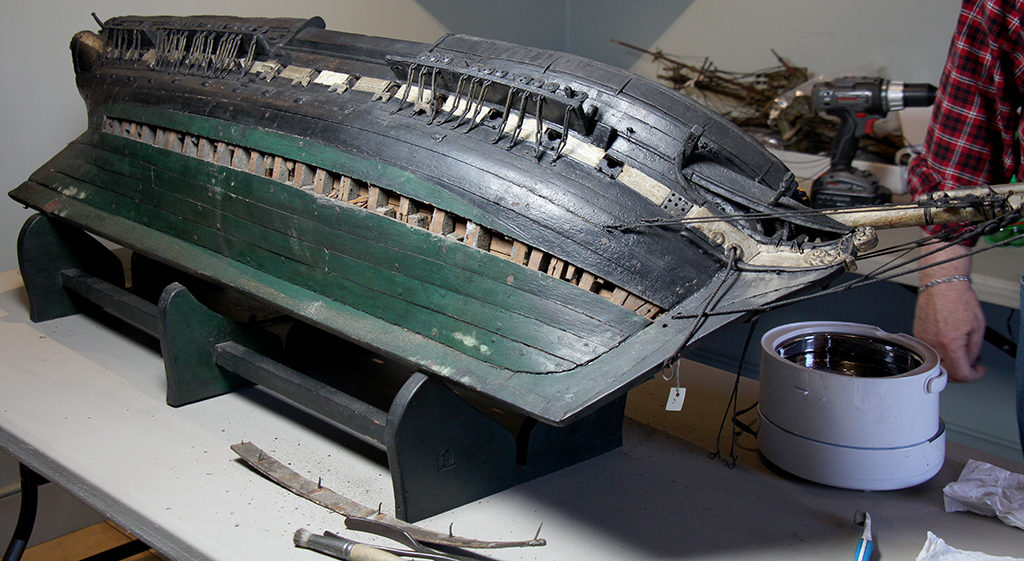

In the last two stages of cleaning, Rob used pressurized air to blow dirt out of the model and then, finally, carefully extracted any remaining debris from between the frames.
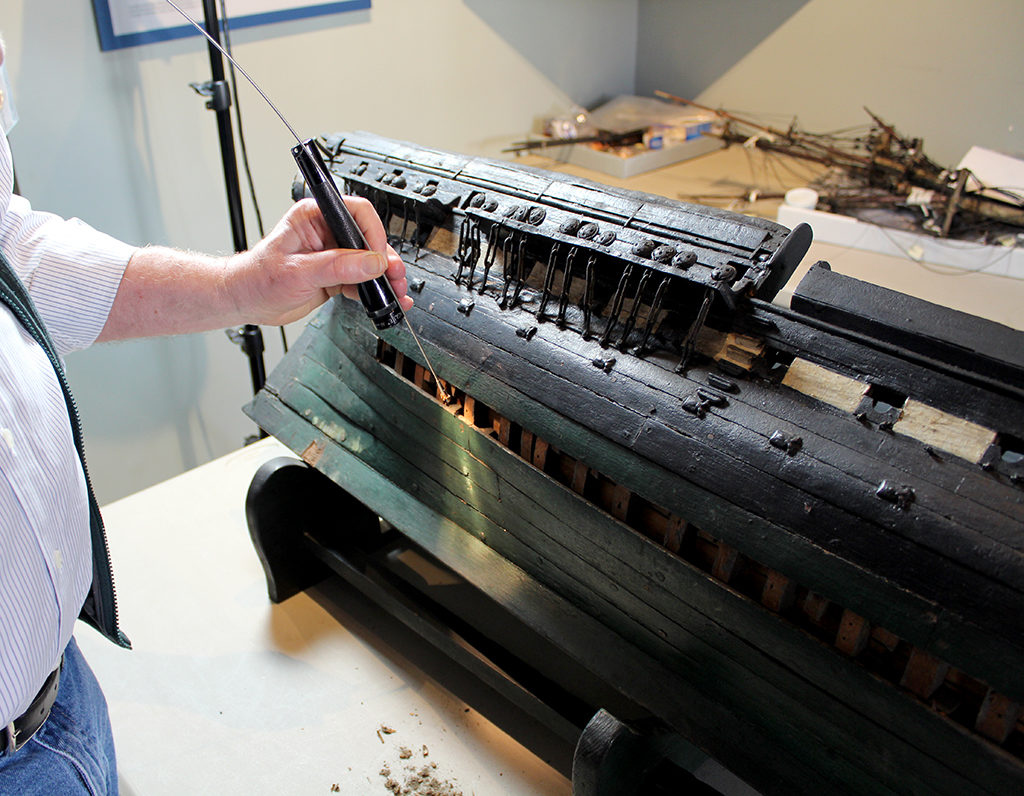

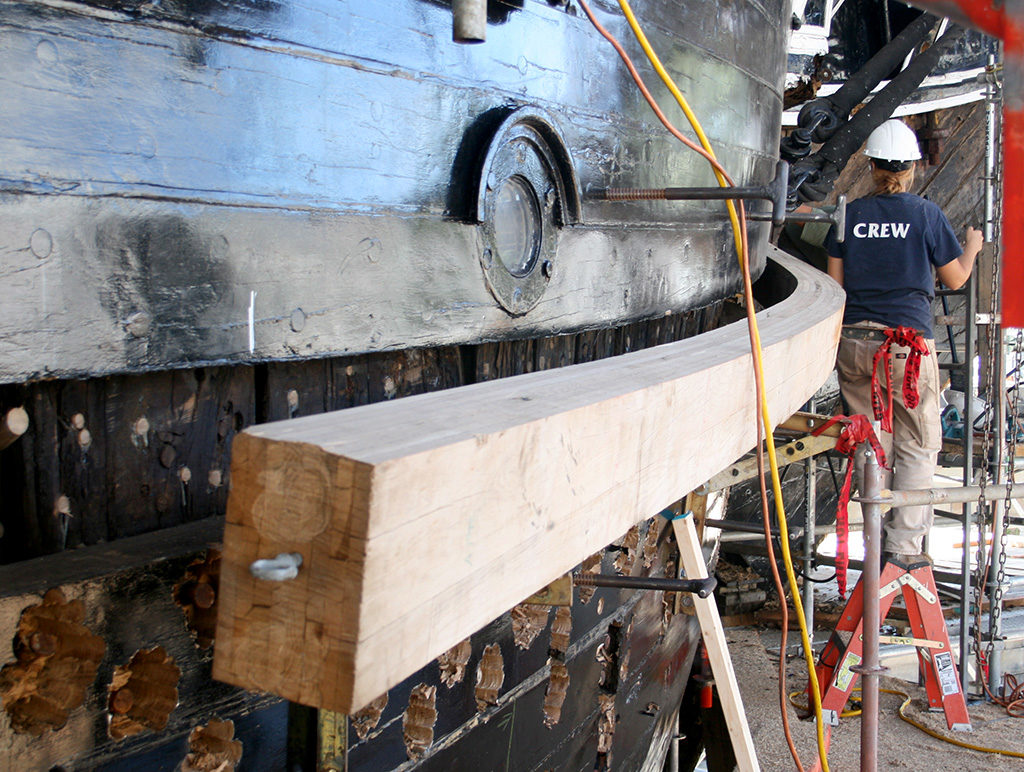

USS Constitution‘s 2015 -2017 dry docking is in its final months. Check back often to read about the last restoration projects and preparations for the ship’s un-docking in the summer of 2017.
_____
The activity that is the subject of this blog article has been financed in part with Federal funds from the National Maritime Heritage Grant program, administered by the National Park Service, U.S. Department of the Interior, through the Massachusetts Historical Commission, Secretary of the Commonwealth William Francis Galvin, Chairman. However, the contents and opinions do not necessarily reflect the views or policies of the Department of the Interior, or the Massachusetts Historical Commission, nor does the mention of trade names or commercial products constitute endorsement or recommendation by the Department of the Interior, or the Massachusetts Historical Commission.
The Author(s)
Margherita Desy, Historian, Naval History and Heritage Command Detachment Boston
Historian, Naval History and Heritage Command
Margherita M. Desy is the Historian for USS Constitution at Naval History and Heritage Command Detachment Boston.
Phaedra Scott
Content Developer, USS Constitution Museum
Phaedra Scott was the Content Developer at the USS Constitution Museum from 2016 to 2017.
